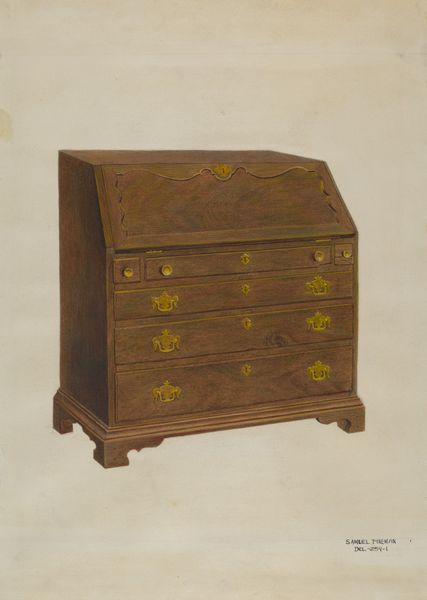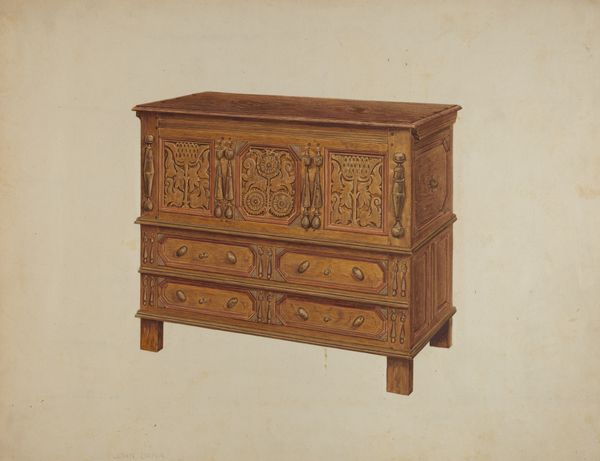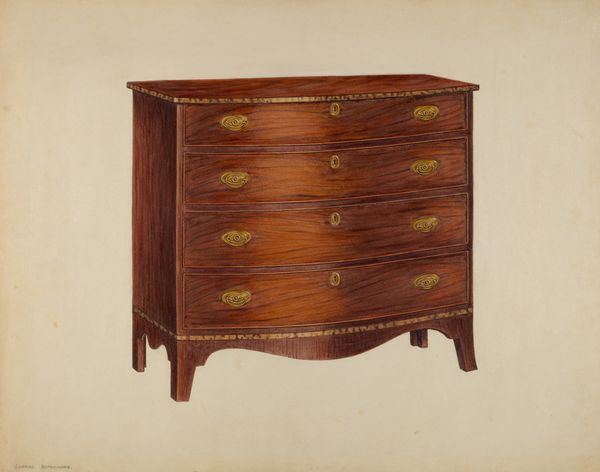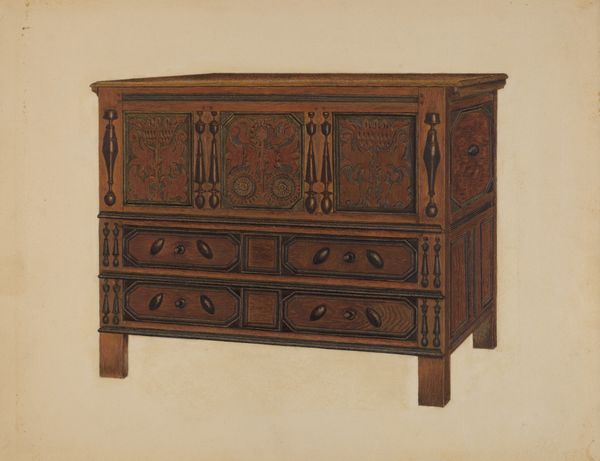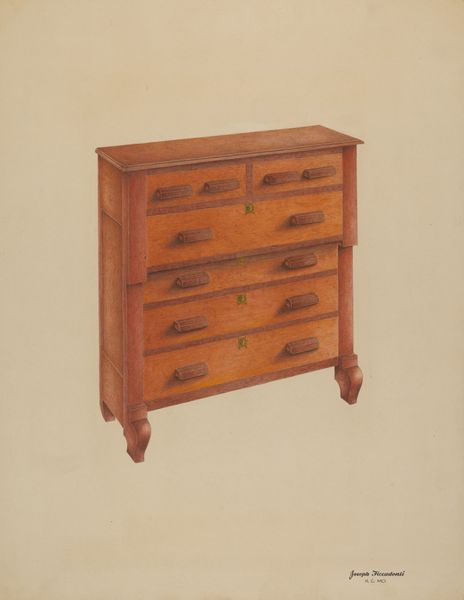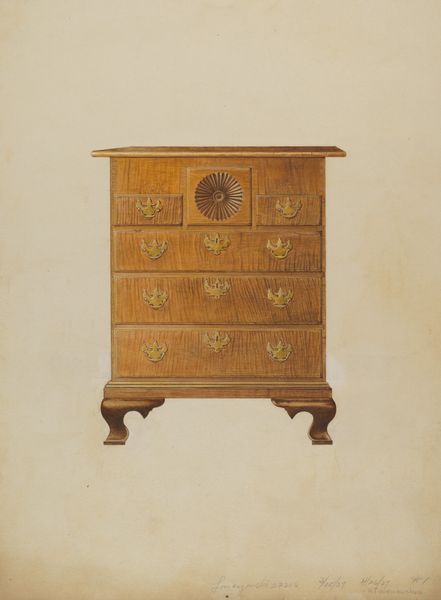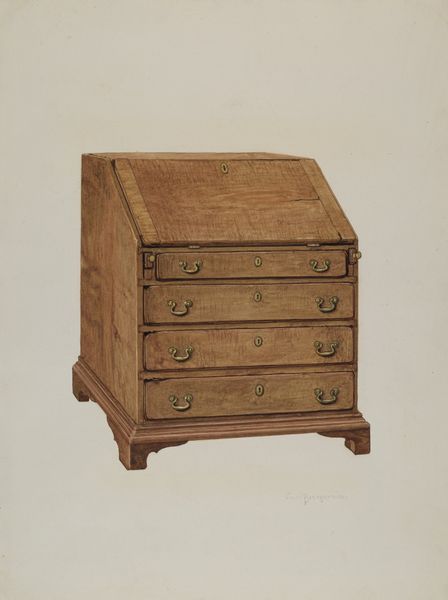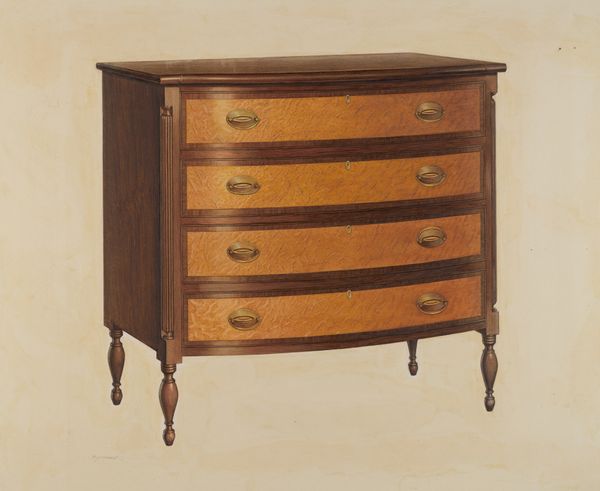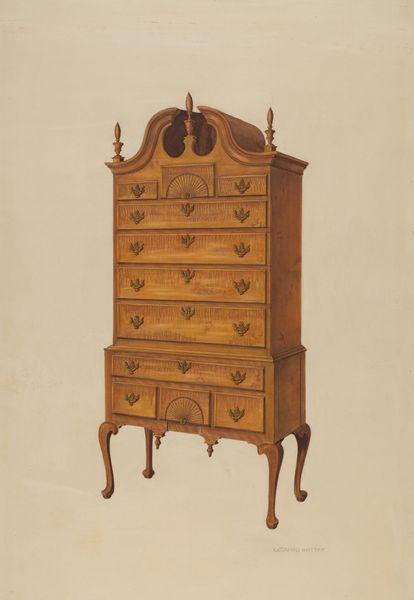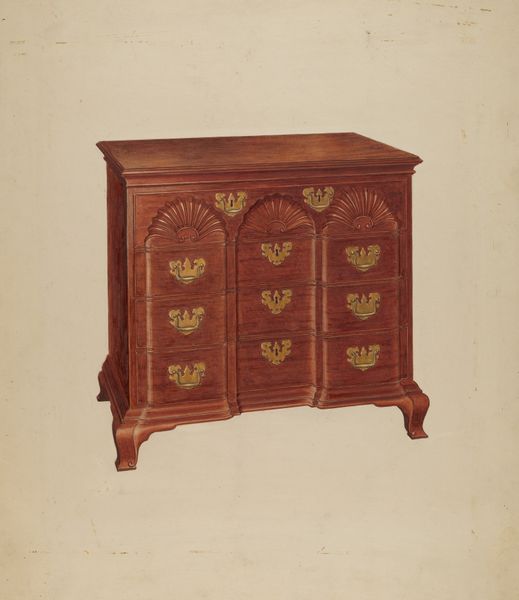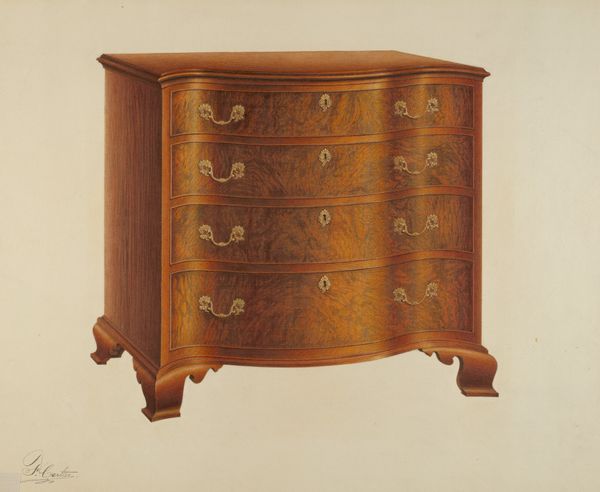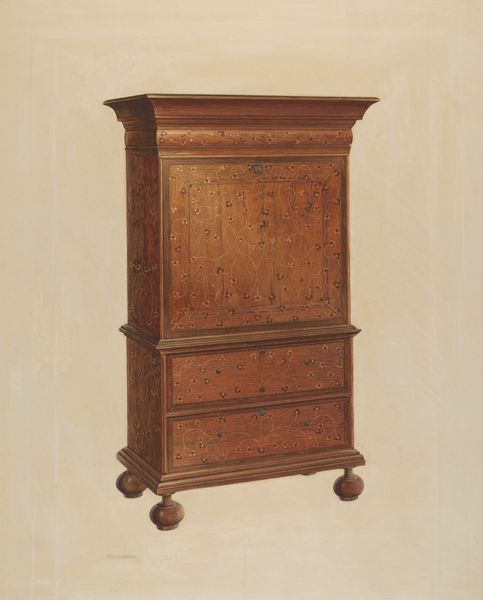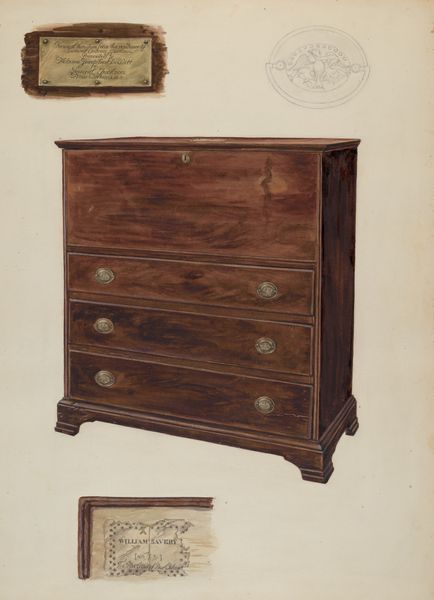
drawing, watercolor, wood
#
drawing
#
water colours
#
watercolor
#
wood
#
academic-art
#
watercolor
Dimensions: overall: 48.8 x 56.8 cm (19 3/16 x 22 3/8 in.) Original IAD Object: none given
Copyright: National Gallery of Art: CC0 1.0
Editor: This watercolor drawing, titled "Desk," was created by Isadore Goldberg sometime between 1935 and 1942. What strikes me immediately is the intense detail and precision, especially in rendering the wood grain and the metal drawer pulls. It's so realistic, almost photographic. How do you interpret the impact of the technique and form here? Curator: Indeed, the technical execution is noteworthy. Consider the interplay of line, color, and value to achieve the verisimilitude you noted. Notice how Goldberg employed layering and blending techniques to emulate the polished wood surface and reflect light, giving dimension to the desk's various planes. Editor: So, the way the artist used the watercolors becomes the main focus, even more than the subject matter itself? Curator: Precisely. By prioritizing the visual components, one isolates and highlights the intrinsic aesthetic value. How does the object’s apparent three-dimensionality, achieved through the use of watercolors, engage you? Editor: I see how the shadowing makes it pop out! The slight curvature of the desk drawers gives the entire image a softer, more inviting feel despite being such a formal, rigid object. But what do we gain from analyzing the painting like this? Is it simply an appreciation of skill? Curator: Partly, but there is also an unpacking of visual language. Close study of color relations, spatial arrangement, and surface treatment offers insight into an aesthetic system. Consider the tonal modulations used to construct a convincing illusion. Editor: So, in decoding the artist’s techniques, we're essentially unraveling their creative choices. It's like looking at a painting as a complex puzzle! Curator: Precisely. Examining those visual strategies gives us a new understanding of both the image, and our act of perceiving. Editor: This close reading has completely changed my view; it is now far more interesting!
Comments
No comments
Be the first to comment and join the conversation on the ultimate creative platform.
